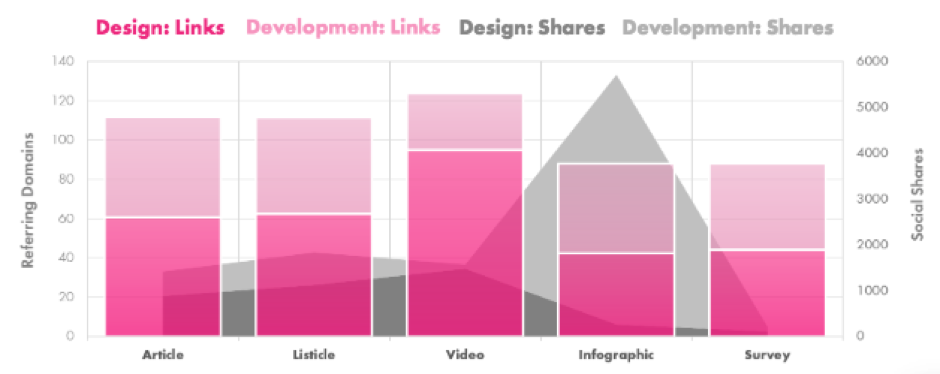What makes a good content idea?
Content is such a powerful way to engage with your target audience and present yourself as an authoritative thought leader within your field. But how do you go about deciding what will make a good content idea that will work to achieve your overall objectives? Write something about what you are an expert in. Writing naturally is half the battle but before you go ahead, make sure you consider all aspects to guarantee its success.

Zazzle Media on how to create an engaging content piece.
Read our core principles to make sure your next content idea is streets ahead of the competition.
1) Is it engaging for your audience?
The way in which audiences engage with content online is constantly changing so carrying out research prior to creating content is critical.
Get to know your audience – who are the personas that you are trying to target through your content? We’ve got a detailed persona template so you can differentiate between the types of content they’ll like - as different people and job roles will prefer varying types of content. For example, a company director with limited time to spare may prefer shorter, bite-sized pieces of content in comparison with a marketing executive who may be looking for longer, more heavily researched articles to gather as much comparative information to present in a meeting.
From your persona insight, you can decide whether the format should be a listicle, longer form or perhaps a more design-led infographic style. It won’t be the same pattern for all industries so getting this right is critical or your content could be reaching the wrong audience for your business, which is ultimately not going to be valuable to you in the long term.
The below image illustrates an example output from content research carried out for a design agency client to establish the type of content that does best within this specific industry. We can see that for this particular industry example, articles and listicles perform really well with infographic content engaging well across social channels.

2) Does it lend itself to search opportunity?
So, you have a really strong topic and a really well written piece of content but will it work to drive search and strengthen your position within the SERPS?
You will need to carry out informational keyword research to really ascertain the longer tail terms that your content needs to target. Customers making really specific searches are far more likely to convert to sales compared to the generic searches which tend to be more aligned to the ‘research’ phase that visitors to a site will carry out before they are ready to make a buying decision.
An example of this would be: ‘women's gym tops’ vs ‘the best Nike women's gym tops’ with the latter lending itself more to a user who is much further towards making a purchase.
Carrying out in-depth informational keyword research is crucial to the process of creating a good content concept which reaches the correct stage of the user journey that you intend to appeal to. We’ve covered off long-tail research on our blog and on our podcast, if you need more information on why it’s important and how to get started with long-tail keyword research.
Targeting both ends of the funnel is key - so ensure you are capturing long tail search, as well as having a strategy for potential customers who are researching your products.
3) Does it conform to Google's EAT regulations?
The Google EAT algorithm simply refers to Expert, Authoritative and Trustworthy content and if you don’t nail this, Google will likely take a dislike to it. The easiest way to conform is firstly, to ensure that whatever you are writing about, you are knowledgeable in the topic and present yourself as a thought leader and expert in your field.
Secondly, how credible is your website in publishing the content? Make sure you have built up good reviews, testimonials and overall site authority so that Google is able to trust you as a resource hosting the content. Part of this should include a good link building strategy – if authoritative external sites are happy to link to your content, this means Google will also view you as having strong authority.
Finally, ensure that your site quality and technical stability is spot on - this is critical to ensuring that you are deemed a trustworthy domain serving the content. This means incorporating a solid SEO strategy to present your site in tip-top technical order so that any content you do post is not diluted in any way.
4) What is the competition doing?
A common phrase often heard within the digital industry is ‘content to beat’ which quite literally means recreating really strong content that's already out there. If it’s already doing well, imagine how well it could do if the quality was raised even higher.
So, with this in mind, research competitor sites and your most important terms, and take a look at the content that has been produced and is performing really well within the SERPS as well as generating a high level of engagement and shareability. There will always be popular topics within an industry which are being written about so it’s not uncommon to be writing about a very similar subject.
The difference is in the quality of content. If a piece of content is already doing really well, create something that's better; focus on adding more value than the top performing piece that already exist. Think about what you can do to make it stand out further, perhaps by offering a different angle or hook. Most importantly, make sure your version is completely unique and under no circumstances should you a duplicate another site's content – this is a huge black mark in Google’s eyes.
By seeking out sites which have the best performing content, you can then reverse engineer this to review those titles which drive the most success. To gauge the success, look at how many referring domains the content has acquired, how many monthly organic visits and whether it has received any social attention.
5) Is it trending?
Trends can drive significant traffic; and Zazzle Media know better than most, the power that a trending piece can have. We have created lots of trend content for clients to keep ahead of the curve and present a real thought leader perspective (which as we already touched on, adds Google credibility).
For example, we produced an article for digital/design trends a few years ago which ranked highly for “digital/design trends.” In fact, the article became more popular than our own home page and featured on a number of external sites. So not only did this work with driving traffic, but it put us at the forefront of a very popular topic – nailing that thought leadership angle.
Keeping content ahead of the curve also increases opportunity for organic pick up as external sites will always be looking to be the first to publish content around up and coming topics. We saw this occur with a trends piece we did for Broadway Travel - which proved to be a great case study for using unique data to get ahead of bigger industry players and gaining high quality links and organic pick up. You can see the search results we produced for them, and the content itself was strong enough for Google to feature in its ‘top stories’ within 24 hours of it going live.
To coincide with this, data-led pieces are doing really well. Unique statistics validate statements and external sites LOVE data and, as we know, are highly likely to want to be the first to host a unique piece of content back up by interesting and exclusive stats. Ultimately, data provides something highly tangible and supporting your creative content ideas with factual information adds credibility (we talk about this in this blog, about how to make data and creativity work hand in hand) not to mention a really interesting hook.
Mining the data and creating something visually appealing takes time so it's worth considering whether the content could be evergreen. If you are investing time and money into an interactive piece, think about whether the content could be refreshed year-on-year to ensure value moving forward.
6) Is it shareable?
Not only from a social aspect but also from a link building perspective. Going back to your ‘content to beat’, consider the content that does best in terms of engagement and shareability over social channels. Similarly, if the aim of the content is to acquire good quality links, what type of site are you planning to reach out to? Do they already have similar content hosted on the site and what is the style that they prefer content to be written in? All key factors to consider if your main objective is to generate links. A popular topic that is well written and placed on an authoritative site is far more likely to attract organic pick up, which is the icing on the cake with any piece of content.
7) Don’t forget to optimise
So, you’ve written a great piece of engaging content; it’s better than its competition; it’s shareable; and you’re excited at how well it’s going to perform. Wait! You're not finished just yet… it’s now time to make sure your content piece is fully optimised. This is a critical element that is often overlooked but it means the difference between a piece of content doing well or REALLY well. Before you go live with the content check, double check the following:
Are your meta descriptions concise and descriptive?
Do your sub headers contain the keywords you are aiming to target?
Have you considered a strong and accurate internal linking strategy to other internal pages (if the piece is for on page)?
Have you inserted images to keep user engagement and have you assigned descriptive ALT text?
Is the balance of target keywords just right or is it overstuffed with keywords?
We can never shout enough about the importance of properly optimised content. Use a content optimisation tool like this one to check how relevant your content is for search terms that you want to target.
8) Don’t forget to consider technical
This is something that can easily overlook, yet it can really impact user engagement. A large in-depth guide or something interactive can potentially slow down performance so make sure that the load time is quick. We know how important responsive design is these days and most sites are built with this in mind but always double check CTAs still work on mobile devices and that everything aligns nicely.
Other technical considerations include ensuring the page is incorporated into the site’s ML sitemap to enable Google to find the content and fully understand its relevance. Finally, make sure you include some highly relevant internal links within the content to help Google further understand the structure of your site and add the important link value to help your content perform well in SERPs.
Summary
A good content piece needs to have many different angles considered to make it a real success. An on trend, informational piece telling audiences something new while being a real thought leader in your field is a sure-fire way to grow your reach, audience and credibility within Google's eyes.
Content, ultimately, is an extension of your brand and there’s little point in having a well-written piece if you are talking to the wrong crowd. Really understanding the content your audience wants and needs and the style in which they prefer it to be presented is absolutely key to great content.
Key takeaways
Is the title eye catching and likely to generate interest?
Is it unique, the best on the topic, and definitely not duplicate content?
What stage of the user journey are you aiming to target?
What informational keywords are you targeting?
What style should the content be presented in according to your personas
Does it lend itself to promotional tactics? And have you got a full distribution strategy planned?
What is the ‘content to beat’?
Is it technically optimised?



 Print the article
Print the article


